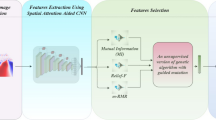Abstract
Activity recognition based on mobile device is an important aspect in developing human-centric pervasive applications like gaming, industrial maintenance and health monitoring. However, the data distribution of accelerometer is heavily affected by varying device locations and orientations, which will degrade the performance of recognition model. To solve this problem, we propose a fast, robust and device displacement free activity recognition model in this paper, which integrates principal component analysis (PCA) and extreme learning machine (ELM) to realize location-adaptive activity recognition. On the one hand, PCA is employed to reduce the dimensionality of feature space and extract robust features for recognition. On the other hand, in the online phase ELM is applied to classify the activity and adapt the recognition model to new device locations based on high confident recognition results in real time. Experimental results show that, with robust features and fast adaptation capability, the proposed model can adapt the classifier to new device locations quickly and obtain good recognition performance.






Similar content being viewed by others
Notes
“XSens Technologies B.V.”, http://www.xsens.com.
References
Chacko BP, Krishnan VRV, Raju G, Anto PB (2011) Handwritten character recognition using wavelet energy and extreme learning machine. Int J Mach Learn Cybern. doi:10.1007/s13042-011-0049-5
Feng G, Huang GB, Lin Q, Gay R (2009) Error minimized extreme learning machine with growth of hidden nodes and incremental learning. IEEE Trans Neural Netw 20(8):1352–1357
Figo D, Diniz PC, Ferreira DR, Cardoso JMP (2010) Preprocessing techniques for context recognition from accelerometer data. Pers Ubiquitous Comput 14(7):645–662
Huang GB, Chen L (2007) Convex incremental extreme learning machine. Neurocomputing 70:3056–3062
Huang GB, Chen L (2008) Enhanced random search based incremental extreme learning machine. Neurocomputing 71:3460–3468
Huang GB, Ding X, Zhou H (2010) Optimization method based extreme learning machine for classification. Neurocomputing 74:155–163
Huang GB, Wang DH, Lan Y (2011) Extreme learning machines: a survey. Int J Mach Learn Cybern 2(2):107–122
Huang GB, Zhu QY, Siew CK (2004a) Extreme learning machine. In: Technical report ICIS/03/2004
Huang GB, Zhu QY, Siew CK (2004b) Extreme learning machine: a new learning scheme of feedforward neural networks. In: IJCNN, vol 2, pp 985–990
Huang GB, Zhu QY, Siew CK (2006) Extreme learning machine: theory and applications. Neurocomputing 70:489–501
Han J, Kamber M (2000) Data mining: concepts and techniques. Morgan Kaufmann, Menlo Park
Jun W, Shitong W, Chung F (2011) Positive and negative fuzzy rule system, extreme learning machine and image classification. Int J Mach Learn Cybern 2:261–271
Kunze K, Lukowicz P (2008) Dealing with sensor displacement in motion-based onbody activity recognition systems. In: UbiComp, USA, pp 20–29
Kunze K, Lukowicz P, Junker H, Troster G (2005) Where am I: recognizing on-body positions of wearable sensors. In: Strang T, Linnhoff-Popien C (eds) Location- and context-awareness. Lecture notes in computer science, vol 3479. Springer, Berlin, pp 257–268
Lai CF, Huang YM, Park JH, Chao HC (2010) Adaptive body posture analysis for elderly-falling detection with multisensors. IEEE Intell Syst 25(2):20–30
Mizell D (2003) Using gravity to estimate accelerometer orientation. In: ISWC 2003, USA
Reddy S, Burke J, Estrin D, Hansen M, Srivastava M (2008) Determining transportation mode on mobile phones. In: IEEE international symposium on wearable computers (ISWC 2008), Pittsburgh, Pennsylvania, pp 25–28
Roggen D, Magnenat S, Waibel M, Troster G (2011) Wearable computing: designing and sharing activity-recognition systems across platforms. IEEE Robot Autom Mag 18(2):83–95
Zhang S, McCullagh P, Nugent C, Zheng H, Baumgarten M (2011) Optimal model selection for posture recognition in home-based healthcare. Int J Mach Learn Cybern 2:1–14
Sun L, Zhang D, Li B, Guo B, Li S (2010) Activity recognition on an accelerometer embedded mobile phone with varying positions and orientations. In: UIC 2010, pp 548–562
Wang X-Z, Dong C-R (2009) Improving generalization of fuzzy if-then rules by maximizing fuzzy entropy. IEEE Trans Fuzzy Syst 17:556–567
Wang S, Chen C, Ma J (2010) Accelerometer based transportation mode recognition on mobile phones. In: APWCS, pp 44–46
Wang XZ, Chen AX, Feng HM (2011a) Upper integral network with extreme learning mechanism. Neurocomputing 74:2520–2525
Wang X-Z, Dong L-C, Yan J-H (2011b) Maximum ambiguity based sample selection in fuzzy decision tree induction. IEEE Trans Knowl Data Eng. doi:10.1109/TKDE.2011.67
Xiao J-Z, Wang H-R, Yang X-C, Gao Z (2011) Multiple faults diagnosis in motion system based on svm. Int J Mach Learn Cybern. doi:10.1007/s13042-011-0035-y
Wang XL (2004) High accuracy distributed target detection and classification in sensor networks based on mobile agent framework. Phd thesis, University of Tennessee
Yang J (2009) Toward physical activity diary: motion recognition using simple acceleration features with mobile phones. In: Proceedings of the 1st international workshop on interactive multimedia for consumer electronics, Beijing, China, pp 1–10
Zhao Z, Chen Y, Liu J, Shen Z, Liu M (2011) Cross-people mobile-phone based activity recognition. In: Proceedings of the twenty-second international joint conference on artificial intelligence (IJCAI), pp 2545–2550
Acknowledgments
This work is supported in part by the Natural Science Foundation of China (61070110, 90820303), and Beijing Natural Science Foundation (4112056), and the National Basic Research Program of China (973 Program, 2011CB302803).
Author information
Authors and Affiliations
Corresponding author
Rights and permissions
About this article
Cite this article
Chen, Y., Zhao, Z., Wang, S. et al. Extreme learning machine-based device displacement free activity recognition model. Soft Comput 16, 1617–1625 (2012). https://doi.org/10.1007/s00500-012-0822-8
Published:
Issue Date:
DOI: https://doi.org/10.1007/s00500-012-0822-8




